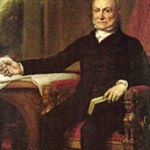Ansel Adams was born in San Francisco in the early years of the 20th century. Although his parents were wealthy, the family lost their fortune in the financial panic of 1907, and his father spent the rest of his life trying to recoup. His mother spent her time occupied with worrying over the loss of their fortune, leaving an ambivalent imprint on young Ansel. His father, however, supported him and influenced him deeply.
He had trouble fitting in at school, for a variety of reasons. His nose was disfigured, the result of being broken during the earthquake and fire of 1906. Natural shyness and a certain intensity of genius further intensified the problems he was experiencing. It’s a possibility that he might have been dyslexic. Eventually, his parents began tutoring him at home, and he earned a “legitimizing diploma,” the rough equivalent to completing the eighth grade. As a result of his undeniably different childhood, he grew to have a deep appreciation for nature.
At age 12, Adams taught himself how to read music and play the piano. Soon he was taking lessons, and for the next dozen years the piano became Adams’ primary occupation. By 1920, music was his intended career. Although he eventually gave up music for photography, music provided structure and discipline to what was otherwise an erratic childhood. Additionally, the careful training and demanding craft of a musician influenced his writings on photography and his artistry.
His love for nature was nurtured in the shadow of the Golden Gate bridge, where he grew up, but it was shaped by the Sierra Nevada. He spent time there every year from 1916 until he died. He joined the Sierra Club in 1919, which was vital to his early success as a photographer. His first published photographs appear in Sierra Club publications. In the late 1920’s, Adams began to realize that he was more likely to prosper as a photographer than a concert pianist. By 1934, he was established as both the artist and defender of the Yosemite. In that year, he was elected to the Board of Directors of the Sierra Club, a position he held for 37 years. During his tenure, the Club grew into an influential national organization that lobbied to create national parks and protect the environment from destructive development projects.
He was a compulsive communicator. He traversed the country in search of the natural beauty he craved and the audiences he needed. When the Museum of Modern Art opened the first museum of photography, Adams played an essential role. Through his work with the museum, some of the closest relationships of Adams’ life were formed, including his association with Nancy Newhall. Newhall and Adams worked together to write several books, including the Sierra Club’s This is the American Earth which helped launch the environmental movement along with Rachel Carson’s Silent Spring.
Ansel Adams was an untiring activist for the environment. He wrote dozens of letters to dozens of people for the sake of the environment, but his true influence came from his photography. The images he captured became the symbols of wilderness America. His images gave the viewer the emotional equivalent of wilderness, often as powerful–if not more powerful–than the real thing. Wilderness and the environment were his passions, but photography was how he pursued his passions. The places that Adams photographed are precisely those places that have been preserved for all time.
Sources:
Turnage, William A. “Ansel Adams, Photographer.” The Ansel Adams Gallery, 2011. 7/20/11.
“History: Ansel Adams.” The Sierra Club, 2011. 7/20/11.



